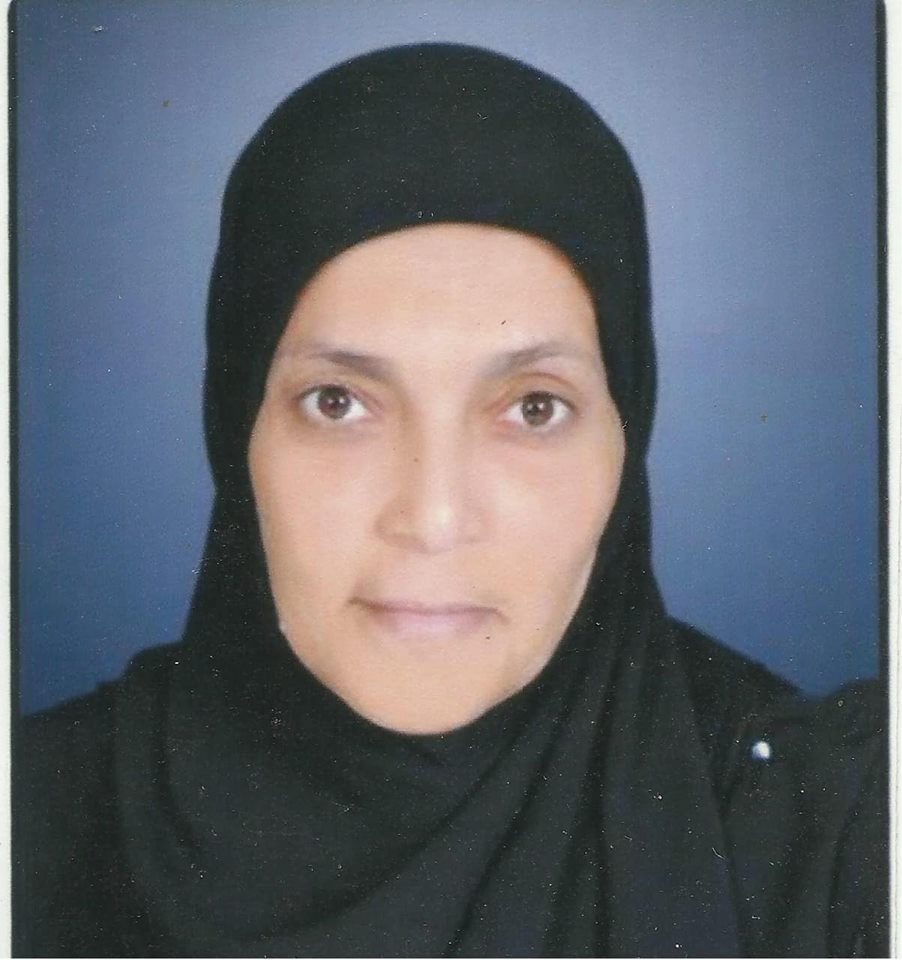
|
Exploratory investigation of recycling local agricultural wastes recycled for sustainable applications
|
|
|
A.Bakry1 , K. Rabie2, A. Albastawisi3 and A. Sharkawi4
|
|
|
1, 2 Power Mechanical Engineering Department, 3, 4 Structural Engineering Department, Faculty of Engineering, Tanta University
|
|
|
aymanbakry@f-eng.tanta.edu.eg
|
|
|
39
|
|
|
Open air burning of agricultural wastes is a major environmental pollution problem in Egypt. The large amount of this lignocelluloses bio-waste has resulted in an extensive search for its utilization. One usage of this waste is to produce energy by different technologies, such as pyrolysis, gasification and controlled combustion. In addition, having Pozzolanic materials out of such energy production can provide important added value to this sustainable application. In this paper, rice straw and rice husk were targeted as main Egyptian agricultural wastes. The most efficient gasification inputs -for producing the highest energy value-were investigated and the Pozzolanic quality of the corresponding residue ashes was explored. The highest produced energy reached 4923 and 5660 kJ per kg of rice straw and rice husk residues, respectively. Even though the byproduct ashes didn’t completely comply with the requirement of the ASTM C618 for fly ash (e.g. Loss of ignition), post-heating process adjusted such compliance deficiency.
|
|

|
REDUCE OF FEED LOSSES INFEEDER SYSTEM FOR LAYING HEN HOUSES
|
|
|
Tarek FOUDA, Asaad DERBALA, Adel HELAL, Ahmed MORSY
|
|
|
Tanta University,Faculty of Agriculture, Agriculture Engineering Department
|
|
|
morsy4902@gmail.com
|
|
|
98
|
|
|
The main objectives of this study toreduce of feed losses in the chain feeder system.The modifying of corner wheel under three levels of chain feeder speeds was 25, 30 and 35m/min and three levels of openinggate feed area was18, 27and 36 cm² were tested. This modification using bearing with corner wheel lead tominimize energy and wearing between corner wheel feeder chain to increase the efficiency of chain feeder with subtle amount of forage components on trough chicken nurture addition to reduce of feed losses in the chain feeder system. The results showing increased the Feeding rate of feeder from 31 to 81kg/min when opening feed area increased from 18 to 36 cm2at 25 m/ min chain speed, at the same conditions, the total amount of feed increased the Feeding rate of feeder from 620 to 1,620 g/m Also theFeeder efficiency increased from 36.90 to 96.40% when using the opening feed area increased from 18 to 36 cm2at 25 m/ min chain speedThe feeding system performance was evaluated under with and without load, the power requirementwith ordinary fillers before modified deceased from 1.089 to 0.941 kWwith load and without load at 25 m/ min chain speed also decreased from 1.026 to 0.846 kWwith load and without load atmodified system. The feeder chine loses increased from 280 to 900 g. when opening feed area increased from 18 to 36 cm2.Also Wearing behaviour compared between wheel before and after using bearing the wearing rate decreased from 0.90 to 0.35g/h before and after modified
|
|

|
REDUCE THE DIFFERENCE BETWEEN IDEAL AND ACTUAL ENVIRONMENTAL MEASUREMENTSIN LAYING HENS HOUSES
|
|
|
Ahmed MORSY
|
|
|
Tanta University,Faculty of Agriculture, Agriculture Engineering Department
|
|
|
morsy4902@gmail.com
|
|
|
100
|
|
|
The main objectives of this study to achieve the closest rate of ideal environmental conditions needed by the hens inside the closed houses such as air temperature, humidity, lighting for hours, air speed, to raise the higher rate of egg production and raise the rate of daily consumption of feed and reduce the mortality percentage and prevent the spread of diseases and low percentage of ammonia and carbon dioxide inside the houses, so measurements were used in the presence of ideal environmental factors and the absence of this ideal factors.The body weight at 25 ages weeks have Less weight difference between ideal weight and actual weight by 155 g. The egg weight at 30 ages weeks have nearest weight between ideal weight and actual weight by 0.02 g. Broilers egg production percentage increased by (4%) at 28 ages. Mortality percentage decreased by (21.9%) comparing ideal mortality at 30 ages weeks.
|
|

|
Evaluation of Canola Biodiesel Purification for Its Using as a Substitute for Diesel Fuel in Rural Communities
|
|
|
M. M. El-Wehishy, M. M. Mostafa, A. I. Moussa and M. A. El-Nono
|
|
|
Agricultural Engineering Research Institute, ARC, Dokki, Giza, Egypt, Agricultural Engineering Dept., Faculty of Agriculture, Ain Shams University, Cairo, Egypt, Agricultural Engineering Research Institute, ARC, Dokki, Giza, Egypt, Agricultural Engineering Dept., Faculty of Agriculture, Ain Shams University, Cairo, Egypt.
|
|
|
agr.eng.wehishy@gmail.com
|
|
|
103
|
|
|
In order to solve the problem of biodiesel purification with different methods beyond water, different materials were used for this purpose. A large amount of biodiesel was produced from canola oil as source of oil therefore methanol alcohol had been added with potassium hydroxide (KOH) as catalyst. After 8 hours, biodiesel was separated from glycerol where glycerol was under the biodiesel using gravity. After 8 hours, biodiesel was separated from glycerol where glycerol was under the biodiesel using gravity. To purify biodiesel from remains of glycerol, water and alcohol, some materials filled two filters. Materials were rice husk grind, bagasse grind, saw dust, magnesium silicate and water. The results showed that the water, methanol and glycerol contents were 0.04, 0.01 and 0.23% respectively with using grind bagasse, but they were 0.2, 0.03 and 0.24% respectively with using water in purification process. So the bagasse grind was better than other materials in purification process of canola biodiesel.
|
|

|
DEVELOPMENT A PROTOTYPE FOR IMPROVING THE PERFORMANCE OF THE CLEANING UNIT IN COMBINE HARVESTING MACHINE
|
|
|
Sehsah, E.E . S.E. Abouzaher** R.M. Kholief *** A.H. El-Hanafy ****
|
|
|
agriculture engineering
|
|
|
abdelhameedhamada111@gmail.com
|
|
|
206
|
|
|
Seed cleaning is an important operation in a number of processes connected with the handling of seed after harvest. The goals of the current research were developing of a laboratory unit for cleaning the wheat crops in combine harvesting machine. The laboratory model was manufactured to simulate and study the aerodynamic characteristics of air and test the performance of the developed cleaning unit at four aerodynamic suction velocities 5.9, 8.5, 11.6 and 14.9 m/s., three feed rates 3, 5, and 7 kg/min, two rotational speed 245 and 350 r.p.m to operate the screens, two shapes for suction part rectangular and circle and three slope angles for screens 5°, 10° and 15° with three replicates. The results indicated that the average of minimum specific energy was 8.46 kw.h.ton-1 at 5.9 m/s aerodynamic suction velocity, 5º screen slope, 0.42 ton/h feed-rate, 245 rpm rotational speed and circle shape of suction tube. Also, the maximum cleanliness was 99.41 % for aerodynamic suction velocity of 14.9 m.s-1, slope of the screen was 15º, at feed-rate of 3 kg.min-1, rotational speed of 245 rpm and rectangular shape of suction tube. On the other hand, the minimum grain losses percent was 0.53% at aerodynamic suction velocity of 5.9 m.s-1, 5º slope of the screen, 3 kg.min-1feed-rate, 245 rpm rotational speed and circle shape.
|
|

|
BAGASSE COMBUSTION FOR MOLASSES PROCESSING UNIT A CASE STUDY
|
|
|
T. H. Ghanem, M. M. Badr, M. M. Geasa and A.H.Elhelally
|
|
|
1 Prof., Agric. Eng. and Deputy Dean of Fac, of Agric. Eng., Al-Azhar Univ, Cairo. 2 Lecturer of Agric. Eng., Fac of Agric. Eng., Al-Azhar Univ, Cairo. 3 Lecturer of Agric. Eng., Fac of Agric. Eng., Al-Azhar Univ, Assiut. 4 Demonstrator of Agric. Eng., Fac of Agric. Eng., Al-Azhar Univ, Assiut.
|
|
|
aly_elhelally25@yahoo.com
|
|
|
207
|
|
|
The main objective of the present work is to study direct combustion system used to heat a molasses processing units from the following points: environmental nature of traditional raw bagasse as a solid fuel. A case study on three different private processing factories in El Minia Governorate upper Egypt (El Roda and Dear Mawas village) in Malawy City, CO emmitted from the first, second and third factories were 4.5, 8.9 and 24 times that of the acceptable range stated by the Egyptian environmental rules (2016). Some bagasse producers used raw bagasse of moisture content ranged between 12 to 35 % wet basis. Higher moisture contents of bagasse fuel affect on the combustion efficiency in molasse processing units.
|
|

|
DESIGN OF A SIMPLE UPRIGHT COMPOST TURNING MACHINE FOR SMALL FARMER
|
|
|
Abdel- Mottaleb A., F
|
|
|
مركز البحوث
|
|
|
tfouda@yahoo.com
|
|
|
211
|
|
|
The aim of this study is to design and construct a simple upright compost turning machine suitable for small Egyptian farms. the performance of the designed machine was investigated as a function of forward speed (0.3 ,0.6 ,0.8 and 1.1 m/sec ), rotor speed (240, 350, and 460 rpm) , number of compost turning (1 ,2 ,3 ,and 4 time per month) and pile shape (long , pile ,and round pile). Machine capacity, fuel consumption, power, energy and turning cost were determined. The main results in this study can be summarized in the following points:
The composting time decreased from 24 week by manual methods to 14 weeks by the new designed turning machine.
The designed turning machine improves physical and chemical characteristics of the final compost comparing with the manual turning methods.
It is recommended to use the designed turning machine for small farmer projects under the following conditions forward speed of 0.3m/sec for turning around - shape piles 0.8 m/sec for turning long shape piles - rotor speed for 460 rpm for both the tow shapes of piles and 4 turning per month.
.
|
|

|
MONITORING WHITE MOLD SCLEROTIA PERORATES TO REDUCE THE RISKS IMPACT ON SOYBEAN SEEDS
|
|
|
Amina ALBEBANY
|
|
|
Tanta, Tanta
|
|
|
tfouda@yahoo.com
|
|
|
212
|
|
|
The experimental work was carried out through 2018 at department of agriculture engineering, faculty of agriculture
Tanta university, Egypt .to investigate the engineering properties of the American soybean seeds and white
mold(Sclerotinia sclerotiorum)imported to Egypt. These properties can be used in design and development of handling,
transporting storage and separating equipment. The seedsdimensions tested under four different moisture content 8.85
,10.8,11.6, and 12.3 % (wet basis).The results showed, the change in moisture content from 8.85 to 12.3% the average
dimensionsof soybean seeds werechanged respectively,the length from 5.39 to 5.96mm.,width from 4.76,to 5.16mm.
Thickness changed from 3.98to 4. 38mm.Volume55.8to 71.93 mm 3 .geometric mean diameterfrom4.66to5.05mm. The
arithmetic mean diameter from 4.7to 5.109mm.and sphericity, changed to decrease from 86.94to 85.1%. Also surface
area changed from 68.29,to 80.17.mm 2 . The averagedimensions of white mold sclerotia wereranged according imported
place thelength ranged from5.85 to20.31mm, width from 1.32 to 4.39 mm. thickness from 0.88 to3.07 mm. volume from
9.75 to 75.19mm 3 .geometric mean diameter from 2.64 to 5.22mm. The arithmetic mean diameter from 3.02 to 8.07mm.
and sphericity, from 15.98 to58.81%. Also surface arearanged from 22to85.85mm 2 .This results revealed to the
differences between the physical properties of soybean and white mold it is not strong spicily for length, width and
thickness this case lead to obstructing separation processes.
|
|

|
Producing Vinegar from Unmarketable Dates of Three Libyan Cultivars Using Double Stage Fermentation Method
|
|
|
Mohamed Abusaa Fennir , Mohamed Taher Morghem and Khalid Mohammed Alsamin
|
|
|
Faculty of Agriculture, Tripoli University, Libya
|
|
|
m.fennir@uot.edu.ly
|
|
|
240
|
|
|
This work investigated producing vinegar from unmarketable 'Taleese', 'Athwi' and 'Hellawi' Libyan date cultivars. Sugar was extracted from 'Athwi' and 'Talees' dates by soaking in distilled water at 1:3 (w/w) for 10 hours and pressing while ‘Hellawi’ dates were mixed with distilled water at the similar ratio, heated and agitated at 80°C for 2 hours and pressed. Total soluble solids (TSS) of solutions obtained from the three cultivars were 16.5, 17.4 and 25.0 °Brix, respectively. Solutions were adjusted to 15.5°Brix and 8 liter of solution of each cultivar were fermented in 15L setup equipped with an airlock. Baker’s yeast was added and solutions were incubated at room temperature averaging 22°C. The process lasted 9 days, and then aerobic acetification was carried out by adding virgin date vinegar at 10% (v/v) and solutions were kept under same conditions. Weekly measurements of titratable acidity (TA) and alcohol percentage were made until alcohol content dropped below 1%. The process lasted 60 days for 'Taleese' and 'Athwi', while 'Hellawi' took additional 11 days. Both fermentations were described by linear relations (R2>0.97). In the anaerobic reaction, cultivars were significantly different in their alcohol percentages and TSS but were similar in acidity and pH. In the aerobic fermentation, no significant differences in TA, pH but significant different in alcohol residues and TSS were recorded. Moreover, sensory evaluation of the three kinds of vinegar was made on acidity, taste, and acceptance; again no significant differences were recorded. Color analysis in Hue angle, Chroma and L* were also made, vinegar of the three cultivars were significantly different; 'Hellawi' vinegar was much darker than 'Athwi' and 'Talees'. Quantification of acetic acid showed its contents above 5% (v/v), representing nearly 85% of total acids. The study demonstrated the potential of producing good quality vinegar from unmarketable Libyan dates.
|
|

|
Waste Management in a Ceramic Wall Tiles Factory
|
|
|
M.G. Elmahgary, Sh. K. Amin, N.F. Abdel Salam, M.F. Abadir
|
|
|
The British University in Egypt, Faculty of Engineering, Chemical Engineering Department -Chemical Engineering and Pilot Plant Department, Engineering Research Division, National Research Centre (NRC), Dokki, Giza, Egypt, Affiliation ID: 60014618- Cairo University, Faculty of Engineering, Chemical Engineering Department,Giza, Egypt
|
|
|
maryam.galal@bue.edu.eg
|
|
|
243
|
|
|
The ceramic tiles industry is known to generate a number of liquid and solid wastes. In this paper three such wastes were chosen that are hardly recyclable to the production line. These are the waste sludge, obtained by water sweeping the various fine wastes settling on the ground into a duct, the roller kiln waste which is a fine powder obtained on grinding the surface of kiln rollers and the cyclones fine dust that cannot be introduced as produced into the production line. In general, these wastes are normally dumped in neighboring landfills which constitutes an environmental risk. In this paper a 23 factorial design was performed to select a wall mix composition made out of the original body mix from wall tiles to which were added specific amounts of each waste so as to abide by Standard Specifications, thus affording a means to produce these tiles in an environmentally friendly way, while at the same time decreasing the production cost.
|
|

|
Utilization of Protein-Rich Wastes in Production of Protease by Bacteria
|
|
|
Rana Essam Gomaa1,*, Ahmed Ismail Khalil1, Ramadan Shehata Attia2
|
|
|
1Department of Environmental Studies, Institute of Graduate Studies and Research, University of Alexandria, Alexandria, Egypt. 2Department of Food Science and Technology, Faculty of Agriculture, University of Alexandria, Alexandria, Egypt.
|
|
|
sci.ranaessam94@yahoo.com
|
|
|
246
|
|
|
Industrial biotechnology processes have recently been exploited for an economic utilization of wastes to produce value added products. Of which, wastes products of meat, poultry and fish processing industries are some of the rich sources of proteins that can be utilized as low-cost substrates for microbial protease production. In addition, the pollution of the environment and health issues due to the improper disposal of the wastes can be reduced.
This research aimed to investigate and optimize the utilization of protein rich wastes in production of protease by bacteria. Therefore, protease producing bacteria were isolated from different locations. Then, the most active isolates were tested on different protein-rich wastes. The obtained results showed that 2 isolates were selected and identified. The optimum conditions for production of protease were 37 o C, pH 7 and 3 days for isolate 1 and 37 o C, pH 9 and 3 days for isolate 2. The crude protease produced from the 2 isolates was partially characterized and the results indicated that the optimum pH was 6 and 9 and the optimum temperature was 80 and 60 o C for the protease from isolates 1 and 2, respectively. Thermo stability was 40 and 60 o C and pH stability was 6 and 9 for isolates 1 and 2, respectively. After that, the produced protease under the optimum conditions was tested to hydrolyze the selected wastes and the results revealed that this enzyme could be used in bioconversion of these wastes. Therefore, the two isolates of bacteria can be used for utilization of protein-rich wastes to reduce the environmental problems and to produce protease enzyme which has several industrial applications.
|
|

|
An Innovative Automatic Device for Nondestructive Inspection and Sorting Potato based on Laser Beam, Color Sensor and Arduino
|
|
|
Morad, M.M. 1, S.G.Hemeda 2, A.M. Abokarima 2, and R.M. ElOlimy2
|
|
|
Potatoes color, Sorting machine, RGB sensor, Image analysis
|
|
|
rheham@yahoo.com
|
|
|
283
|
|
|
Potato sorting, especially Brown Rot Disease is essential for evaluating product quality to increase market value. If sorting of potato is done by manual techniques, the process will be very slow and sometimes error-prone. Color depends on the passage of the laser beam through the potato tissue is the most important feature to accurately classify and sort potatoes. This paper deals with the development of an innovative automatic potato nondestructive inspection and sorting device based on laser beam and color sensors. The device consists of a conveyor system, a sorting unit, a TCS34725 RGB color sensor and Arduino Uno panel. TCS34725 RGB color sensor is used to detect the color of potatoes while Arduino Uno and a PLC developed board, based on the ATmega328 microcontroller, controls the overall process. The potatoes were passed in a straight line on the conveyor to the sorting point. Color determination is based on the analysis of the output frequency of the TCS34725 RGB color sensor. Based on the captured by the sensor, the potato will be sorted as good or rot. The sorting device was experimentally investigated as a function of change in conveyor speed and frequency of color intensity and evaluated in terms of device accuracy and productivity. The experimental results reveal that the overall device accuracy was found to be 97.8%. The productivity of the device was estimated at 2807 potatoes per hour with one line.
|
|

|
قمامة مصر استثمار مهدر وعبء متفاقم
|
|
|
أحمد السباعى
|
|
|
مدير تحرير مجلة الأهرام الإقتصادي
|
|
|
elsebaie409@hotmail.com
|
|
|
307
|
|
|
تقدر قمامة مصر بـ70 مليون طن سنوياً و 22 مليار طن تراكمات قديمه للقمامة وفقا لتقرير صادر عن وزاره البيئة ، وأوضح التقرير أن حجم القمامة اليومية يصل لـ 57 ألف طن، وبلغ نصيب القاهرة الكبري بمفردها 19 ألف طن يوميا التي تعد من أغني أنواع القمامة في العالم،حيث يصل عائد الطن الواحد بعد تدويره إلي 8000 جنيه لما يحتويه من مكونات مهمه تقوم عليها صناعات تحويلية كثيرة،كما ان مصر تنفق حوالي 30 مليار جنيه سنويا علي كلفة التدهور البيئي وأن حجم التدوير في مصر لا يتجاوز 20%.
كل هذا دفعنا لكي نفتح ملفا نراه من أعقد الملفات حيث تتوافر كل سبل نجاح تدوير القمامة واعتبارها مخرجا مهما من أزمة تزداد تفاقما مع كثرة أعداد السكان والذي يتبعه بالضرورة تزايد في حجم القمامة وإذا اضفنا الي ذلك ضعف أجهزة الدولة المعنية عن ملاحقة الزيادة المضطردة فضلا عن ضعفها في مواجهة الحجم التراكم الحالي يظهر لنا التعقد الشديد في الموقف ، فتدوير القمامة إذا ما تم استغلاله فى مشروع قومى حضارى وضع لبناته خبراء متخصصون ، والذي لا يتطلب سوى بداية مالية لاستثمارات قد لا تتجاوز 3 مليارات جنيه لكي نبدأه ، ومن عائد دورانه سيكتمل ذلك المشروع ليصبح أسطورة استثمارية ونموذجا فريدا ..
|
|

|
Stability and adaptability of some Egyptian cotton varieties for lint cotton yield
|
|
|
أ.د/ السيد الصعيدي
|
|
|
كلية الزراعة جامعة طنطا
|
|
|
elsayedelseidy@yahoo.com
|
|
|
332
|
|
|
Study of seven cotton varieties i.e. Giza 86, Giza94, Giza 87, Giza 88, Giza 92, Giza 93 and Giza 96 under fourteen environments ( seven locations i.e. Alexandria, Damnhour (El-Beheira), Edko (El-Beheira), Kafr El- Sheikh, Sedi Salim (Kafr El- Sheikh), Kafr Saad ( Damietta), Kafr El- Batekh( Damietta) under two successive seasons, 2013 and 2014 to study stability and adaptability for lint cotton yield character of different environmental conditions. The variety x environment mean square was significant, indicating different response of the varieties in different environments. Regression coefficient of lint cotton yield on the environmental index depicted changes between the varied varieties for yield stability and adaptability. Varieties Giza 92 and Giza 96 produced the highest lint cotton yield with regression coefficient did not differ unity (bi=1) and were continue as highly modified to all environments. Too, varieties had deviation from regression equal zero (S2di = 0). Moreover, Giza 94 was lowly adapted to all environments where regression coefficient apart from unity (S2di ≠ 0) so, it is more sensitive to any changes in the environmental conditions, considered as height yielding environments and unstable.
|
|

|
Evaluation of some Egyptian cotton cultivars in different locations differed in type of soils and quality of irrigation water
|
|
|
أ.د/ السيد الصعيدي
|
|
|
كلية الزراعة جامعة طنطا
|
|
|
elsayedelseidy@yahoo.com
|
|
|
333
|
|
|
Field conditions vary from location to another as affected by soil salinity and water quality, so the gene expression differs accordingly to this condition. The objective of the present investigation was to evaluate of the seven varieties under different environments as affected by saline soils and water quality to recommend the best genotypes for each location. The seven varieties included in this study were evaluated from Extra-long staple category (Giza 87, Giza 88, Giza 92, Giza 93 and Giza 96) and the long staple category (Giza 86 and Giza 94) and these varieties were grown at seven locations in lower Egypt (Delta) over the two growing seasons of 2013 and 2014 and the sowing date was done in the second week of April of both seasons. The varieties were compared in a randomized complete block design with four replications to estimate earliness percentage, position of the first fruiting node and seed cotton yield (k/f). Agriculture practices were applied as Cotton Research Institute recommended for cotton cultivation. Variance components over locations and years were calculated for earliness, cotton yield and yield components. Absolutely, Giza 94 from long staple category surpassed in all locations for characters, followed by Giza 86. Into extra long staple category, the varieties Giza 92 and Giza 96 surpassed in all locations fro most characters, while Giza 87 was the best locations under Sedi Salem, Kafr Saad and Kafr El-Batekh and Giza 88 under Edko, Kafr Saad and Kafr El-Batekh locations. The best location for Giza 93 was Kafr Saad (Damietta location).
|
|

|
Chemical, physical and Sensory evaluation of low fat beef burger with Carboxymethyl cellulose from rice milling by-products
|
|
|
أ.د/موسي سالم
|
|
|
كلية الزراعة - جامعة طنطا
|
|
|
mousa.salem@yahoo.com
|
|
|
335
|
|
|
This investigation was carried out to study the possibility of produce of carboxymethyl cellulose (CMC) from rice milling by-products (rice bran and hull) and used as fat replacers in preparing low fat beef burger was added by substitution of fat at levels of 1.0,1.5 and 2.0%. Characterizations of CMC were analyzing by the spectra of FTIR, Degree of substitution (DS), water holding capacity, oil holding capacity, swelling capacity and gel content,furthermore, gross chemical composition, physical properties, cooking characteristics were determined. Results indicated that, Rice bran had significantly the highest content of crude protein and ether extract compared with rice hull on contrast, rice hull had a significantly higher percentage of cellulose and silica 45.88 and 10.20% respectively than that of rice hull. The CMC%, Degree of substitution (DS), water holding capacity, oil holding capacity, swelling capacity and gel content of CMC produced from rice bran are significantly higher than that of rice hull. addition to, CMC increase the amount of moisture, carbohydrates and crude fiber and decrease the amount of fat in compare with control beef burger sample. Statistical analysis for physical properties indicated that there were a significant differences in both shrinkage and diameter reduction, while no differences were observed in Texture Profile Analysis( TPA) for beef burger formulas prepared with CMC compared with control beef burger. So this research suggests that CMC is effective in improving physical, chemical and functional properties of beef burger.
|
|

|
CLASSIFICATIONS OF DIFFERENT CROPS USING SATELLITE IMAGERY IN WEST TRIPOLI REGION
|
|
|
أ.د/الطاهر مادى
|
|
|
المعهد العالى للتقنيات الزراعية-طرابلس ليبيا
|
|
|
tfouda@yahoo.com
|
|
|
344
|
|
|
بسم الله الرحمن الرحيم
The study area is located in south Tripoli, Libya (latitude of 32° 42` 25``and longitude of 12° 52` 16``). The soil at these sites is a sandy loam. Minimum distance supervised and K-means unsupervised algorithms were used to identify different crops within the study area. Both algorithms were run on the 21st November GeoEye-1 image using ENVI v4.7. The results shows different crops using MD algorithm. The classification produced three distinct crops (potato, clover and citrus) and one more class (bare soil). The results of the confusion matrix showed that the overall accuracy of the k-means classification was 86.15 %. The classification accuracy varied for identifying different classes ranging from 66.83% (for citrus) to 92.53% (for bare soil). The classification accuracy for citrus, potato and clover were 66.83, 92.24 and 70.37% respectively
determined minimum distance and k-means algorithm of potato, citrus, and clover crops in west tripoli
|
|

|
Recycling of Cullet, Waste clay bricks and Wastes resulted from Wheat and Sugarcane cultivations in the Manufacture of Fired Clay Bricks
|
|
|
Mai H. Roushdy
|
|
|
Faculty of Engineering, British University, Cairo, Egypt
|
|
|
mai.hassan@bue.edu.eg
|
|
|
345
|
|
|
Agricultural wastes are routinely accumulates within the plant premises as stock piles. This represents an extremely high ecological hazard as such powder if inhaled for long periods can lead to serious lung problems such as silicosis. The main aim of this research is to investigate the possibility of substituting part of the main body mixture of fired building brick by some wastes. The first type of waste the cullet while the second type is the waste clay bricks and the third is an agricultural residue obtained from wheat and sugarcane cultivation.
The experimental program includes performing XRF and sieve analysis for raw materials. Cubic brick specimens of approximate dimensions 50 × 50 × 50 mm3 were molded by dry pressing under uniaxial pressure of 1 MPa then dried overnight at 120 oC. Tile samples were fired at temperatures in range off 850 oC for 15 min soaking time. Water absorption, apparent porosity, and mechanical properties were determined and compared to ES 4763 / 2006 and ASTM C 62 / 2013 standards.
According to the previous properties that were measured, it was found that the samples with the composition (38 % Desert clay, 20% Homra, 10% cullet, 15% Wheat ash straw, 17% sugarcane) has the optimum properties with respect to ES 4763 / 2006 and ASTM C 62 / 2013 standards.
|
|

|
MATHEMATICAL MODEL TO ESTIMATE VENTILATION REQUIREMENTS IN LAYING HENS HOUSES
|
|
|
Nour kassab
|
|
|
Tanta university
|
|
|
nourkassab2308@gmail.com
|
|
|
1353
|
|
|
Mathematical model were developed to estimate ventilation requirements in laying hens houses. This model written by C++ described ventilations and cooling processes for The house namely, a conventional cage house, (55 m L × 12 m W × 3 m H) had a nominal capacity of 4000 hens (6 hens per m2 in a floor), Ventilation system evaporative cooling system were used, it have 4 ventilators each one 1m * 1m distributes air for 42000 m3 /h with 6 brushes. The results showing increased the
|
|

|
Fabrication of Solar Powered Compressor Less Refrigerator Unit Using Peltier Module
|
|
|
S.G.Hemeda , A.M. Abokarima , and R.M. ElOlimy
|
|
|
Peltier coolers, Thermal energy, chlorofluorocarbons
|
|
|
rheham@yahoo.com
|
|
|
1362
|
|
|
Conventional cooling systems such as those used in refrigerators utilize a compressor and a working fluid to transfer heat. Thermal energy is absorbed and released as the working Fluid undergoes expansion and compression and changes phase from liquid to vapor and back, respectively.
Semiconductor thermoelectric coolers (also known as Peltier coolers) offer Several advantages over conventional systems. They are entirely solid-state devices, with no moving parts; this makes them rugged, reliable, and quiet. They use no ozone-depleting chlorofluorocarbons, potentially offering a more environmentally responsible alternative to conventional refrigeration. They can be extremely compact, much more so than compressor-based systems. Precise temperature control (< ± 0.1 °C) can be achieved with Peltier coolers.
The objectives of this study are to design and develop a working thermoelectric refrigerator interior cooling volume of 5L that utilizes the Peltier effect to refrigerate and maintain a selected temperature from 5 °C to 25 °C. The design requirements are to cool this volume to the temperature within a time period of 6 hrs. and provide retention of at least the next half an hour. The design requirement, options available and the final design of thermoelectric refrigerator for application are presented.
|
|

|
Modified a manual knapsack sprayer to operate with solar energy through air compressor
|
|
|
Samy G.Hemeda , Abdulwahed M. Abokarima , and Mohamed S. El Marazky
|
|
|
knapsack sprayers, solar energy
|
|
|
rheham@yahoo.com
|
|
|
1363
|
|
|
knapsack sprayers are indispensable agricultural equipment for small and marginal farmers for pest control because of affordability and ease of operation. Commercially available knapsack sprayers are manual, petrol engine operated or battery operated. An attempt was made to modify a knapsack sprayer to operate with solar energy through the air compressor. A delivery mechanism had been embedded for solution application through a nozzle. The air pressure was controlled through a non-return valve. The air compressor could be operated directly by solar energy or through the battery. The whole system was tested using two different colors of nozzles, orange, and red. The loss percentage in nozzle discharge was evaluated for every nozzle at different pressure. The results indicated that this percentage was minor due to the uniformity of applied pressure.
This device is developed to reduce the constant application of energy to throttle to regulate air pressure a problem in conventional knapsack sprayers. Laboratory and field tests were conducted to determine the flow rate, the application rate of the sprayer and the charging time of the battery used in the developed sprayer.
|
|

|
SHAFT ADAPTER MODIFICATION AND DATA ACQUISITION SYSTEM FOR TRACTOR POWER TAKE OFF ESTEMATING
|
|
|
El-Gwadi, A. A. 1 H. H. Mohamed2 W. M. Ibrahim1 S. G. Hemeda1
|
|
|
1 Agric. Eng. Res. Inst., Dokky, Egypt. 2. Soil and chemistry. Dept., Fac of Agric SbaBasha., Alexandria University.
|
|
|
rheham@yahoo.com
|
|
|
1382
|
|
|
The overall goal of this research is to develop component of portable PTO torque strain gauge adapter includes a rotational speed measurement system to attach to the tractor with no modifications to the tractor PTO shaft, this component easily interfaces with data acquisition systems in order to estimate tractor PTO power directly, to avoid indirect traditional volumetric fuel method for PTO power estimating. The system installed on a tractor with minimal alterations to the tractor.
The strain gauge adapter is one part has two sides made of mild steel for high strain sensitivity. Strain gage fixed on female side of the adapter, this side engages to tractor PTO, while Slip ring, and sixty toothed gear fixed on male side, engages to rotary agric. implement or water pump. The adapter uses as a direct method of estimating tractor power take off, by measuring both torsion and PTO revolution number, exert on the tractor power take off shaft. The adapter connected to a stationary data acquisition system, located on the tractor cabin through wires to sense and transmits PTO torsion and revolution number pulses, into engineering units. The plan of realizing the goal of this research is based upon the following:
1. Improving a strain gauge torsion adapter for flexibility; durability and fitting installation.
2. Assembling the adapter to form a slip ring torsion transducer for a direct method of tractor power take off shaft power measurement.
3. Testing the performance of the adapter in the laboratory.
4. Evaluate the performance of the adapter in the field.
Strain gauge power take-off adapter calibration was conducted using a pre-calibrated weights hanged on a known length torque wrench. No statistically significant differences were found between the pre-calibrated tool and the developed strain gauge adapter. The differences in torsion values ranged from 3 N∙m to 23 N∙m.
|
|

|
دور أدوات التنقيب عن البيانات في الحفاظ على البيئة الزراعية
|
|
|
عبد الواحد محمد أبوكريمه سامي جمعة حميده سميرة شلبي قاسم ريهام مبروك العليمي
|
|
|
معهد بحوث الهندسة الزراعية، مركز البحوث الزراعية، جمهورية مصر العربية
|
|
|
samirakassem@yahoo.com
|
|
|
1383
|
|
|
يتمثل السعي الدائم في رفع إنتاجية المحصول لتوفير المزيد من الغذاء لمقابلة التزايد المستمر في أعداد السكان وارتفاع مستوى المعيشة، إلى مزيد من الاستنزاف للموارد المتاحة، والمغالاة في استخدام التقنيات الحديثة (الميكنة والأسمدة الكيماوية والمبيدات، ومنظمات النمو... الخ)، والاستخدام غير الرشيد لمياه الري وما يصاحب ذلك من ممارسات خاطئة تسبب الكثير من الأضرار بالبيئة الزراعية. وينقسم الإنتاج الزراعي لشقين أساسيين متلازمين، وهما الإنتاج النباتي والإنتاج الحيواني وعلى ذلك يصبح لدينا في مصر مخلفات نباتية وحيوانية، تقدر سنويًا بنحو 35 مليون طن. ويترتب على زيادة كميات المخلفات المتولدة في مصر وخاصة في المناطق الريفية وتراكم كميات كبيرة منها بمرور الوقت أن تصبح مصدرًا رئيسيًا للتلوث البيئي، وخطرًا على صحة الإنسان. ومن المعوقات والتحديات التي تقف أمام استغلال المخلفات الزراعية والاستفادة منها أسباب عديدة، منها ما يتمثل في نوعية هذه المخلفات، ومنها ما يتعلق بكيفية اتخاذ القرار بشأنها.
إن التنقيب عن البيانات هي عملية تحليل البيانات من منظور مختلف واستخلاص علاقات بينها وتلخيصها إلى معلومات ذات فائدة من خلال استعمال مجموعة من الأدوات المعقدة، وبعض من هذه الأدوات تشمل أدوات الإحصاء الاعتيادية والذكاء الاصطناعي. ويمكن تقسيم أدوات التنقيب عن البيانات إلى أدوات التنقيب عن البيانات المباشرة وغير المباشرة؛ حيث يتمثل الهدف من التنقيب عن البيانات المباشر في استخدام البيانات المتاحة لإنشاء نموذج مع وصف للمتغيرات؛ أما الهدف من التنقيب عن البيانات غير المباشر هو عدم توافر اختيار لمتغير محدد، لكي يتم بناء علاقة بين كل المتغيرات. وتندرج أدوات التصنيف والتقدير والتنبؤ ضمن أدوات التنقيب عن البيانات المباشر؛ أما أدوات التجميع والاتحاد والوصف والعرض فتندرج ضمن التنقيب عن البيانات غير المباشر. في هذه الدراسة تم التعرض بالشرح لأدوات التنقيب عن البيانات التي يمكن الاستفادة منها في تحليل البيانات مثل التنبؤ أو التصنيف للمخلفات الزراعية على سبيل المثال.
|
|

|
Time composted effect on recycling some organic wastes
|
|
|
أ.د/ ناصر كمال
|
|
|
كلية الزراعة - جامعة طنطا
|
|
|
nasserkamal@yahoo.com
|
|
|
1385
|
|
|
Organic wastes are usually used in our agricultural fertilization policy since these organic wastes acting as major organic source for maintaining soil fertility and improving the productivity of agricultural soils. Different organic farm residues such as Rice Straw (R.S) and clover hay (C.H.) as cheapest farm residues were collected from El-Gemmeiza village, Gharbia Governorate. Samples were finely ground for determination the physicochemical features of these organic residues. Fresh refuse samples of EL-Gharbia Governorate (Town refuse (T.R)) were taken from different sites. The non-fermented materials such as stones, porcelain, wood, metals, plastics, textiles, rubber products and other inorganic were discarded. When municipal solid waste is converted to compost, several preparation steps are needed. They should preferably be removed from the waste before the composting process begins. Samples of poultry manure (P.M.) and slaughterhouse manure (S.M) were collected from chicken and slaughterhouses in El-Santa city, Gharbia Governorate. The collected manures were spread to dry in the air, then finely ground and prepared for mixing and composting. Eight treatments were used its following: 1- T.R, 2-. T.R + P.M, 3- T.R + S.M, 4- T.R. + C.H, 5-R.S, 6- R.S + P.M, 7 R.S + S.M, and 8- R.S + C.H. Therefore all the organic materials and their combination mixtures with other organic residues were composted in soil holes (0.5 m3). The period of composting longed 5 months of maturation. Biophysico-chemical characteristics of these matured organic composted materials were measured. The obtained results showed composted town refuse and combination mixtures with other residues were lower quality compared to rice straw and its combination mixtures .Composted rice straw and its mixtures have the highest values of gummy materials; total and labile polysaccharides content; water holding capacity and cation exchange capacity and its lowest of balk density
|
|

|
Behavior of some Egyptian cotton varieties under late planting date
|
|
|
Shaker2,S.A., E. H.El-Seidy1, Y.M. El-Mansy2 and S.S.M. Badr2
|
|
|
المركز القومي للبحوث
|
|
|
elsayedelseidy@yahoo.com
|
|
|
1412
|
|
|
Planting date is one of the most important management factors involved in producing high-yielding and high quality cotton. However, cotton growers often lost the optimal planting date waiting for the harvest of preceding full-season winter crops. So, cotton breeders look forward in selecting some adapted varieties for sowing at late planting date to enable cotton growers to make better land use by planting a winter crop or take frequent cuts of Egyptian clover before cotton planting. There for, the present investigation aimed to study the behavior of varieties under late planting date. Two successive seasons 2018 and 2019 growing six varieties were evaluated in two planting dates at Sakha research station, the first date was in the first week of April (conventional planting date) and the second planting date was in the first week of May (late planting date). The results showed that the varieties Giza 95, Giza 97 and Giza 96 were good under late planting date for most traits. Cotton breeders can use these varieties to improve breeding programs in order to select the most varieties for late-planting date. These varieties could be exploited in breeding program aiming to improve late-planting tolerance. It will produce valuable economic value for farmer and nation.
|
|

|
Evaluation of some traits under different locations as affected by saline soils and water quality in cotton
|
|
|
El-Seidy, E. H1., S. A. Shaker2 and Hanan El- Ganayny2
|
|
|
المركز القومي للبحوث
|
|
|
elsayedelseidy@yahoo.com
|
|
|
1413
|
|
|
Field conditions vary from location to another as affected by soil salinity and water quality, so the gene expression differs accordingly to this condition. The seven varieties included in this study were evaluated from Extra-long staple category (Giza 87, Giza 88, Giza 92, Giza 93 and Giza 96) and the long staple category (Giza 86 and Giza 94) and these varieties were grown at seven locations in Lower Egypt (Delta) over the two growing seasons of 2013 and 2014 in a randomized complete block design with four replications. Variance components over locations was calculated for earliness, cotton yield and yield components. Kafr Saad location recorded the desirable traits i.e. seed cotton yield (kf), Lint cotton yield (kf), boll weight (g), seed index (g) and lint index (g). The main objectives of this study have been conducted to assess the effect of different locations as affected by salinity on yield and yield components for cotton.
|
|

|
Production of thermal insulation for flat surfaces from compressed palm leaf
|
|
|
El Ashmawy, N. M.
|
|
|
Senior Researcher, Agric. Eng. Res. Inst., Agric. Research Center, Giza, Egypt
|
|
|
ashmaoy2000@gmail.com
|
|
|
1418
|
|
|
The palm leaf represents the largest remaining of the palm, where pruning is done three times per year, produced from each palm from 9 to 12 leaves, which is about 25 kg / palm annually, and the number of palm trees in Egypt is more than 17 million palm trees, which produces waste per year more than 425000 tons annually, used Of that, a percentage of not more than 10% is only for manual work, and the rest is heartburn, which causes an environmental disaster and problems for farmers to get rid of, as the newspaper contains a high percentage of cellulose, which provides an opportunity to use it as a thermal insulator. Isolation of solar collectors as well as refrigerated storage rooms is a problem in terms of costs because of the high price of industrial insulators, which must be changed a lot when exposed and absorb rain or moisture water, which increases the cost of maintenance, and the possibility of manufacturing a dielectric from palm groves will reduce the maintenance cost due to the low price of the grocery and its availability in Arab countries, where palm cultivation is large in the Arab countries, representing more than 75% of the world’s cultivation. To achieve the objective of this research, insulated panels were made from shredded palm leaf, with dimensions of 100 x 60 x 5 cm
|
|

|
Ethanol Production from Residues of Different Saudi Dates Cultivars
|
|
|
Nasser M. Alashmawy1*, Kheled Ehmed2, Mahmoud Younis2 and Abdullah Alhamdan2
|
|
|
1 Senior Researcher, Agric. Eng. Res. Inst., Agric. Research Center, Giza, Egypt 2Dept. of Agricultural Engineering, College of Food & Agricultural Sciences; King Saud University; Riyadh 11451; Saudi Arabia.
|
|
|
ashmaoy2000@gmail.com
|
|
|
1419
|
|
|
Recently, increased interest in the fuel from biomass in the worldwide has emerged each time petroleum derived gasoline registered well publicized spikes in price. The industrial research and efforts have become more and more focused on the low-cost large-scale processes for lignocellulosic feed stocks originating mainly from agricultural and forest residues along with the herbaceous materials and that of the municipal wastes. In this research bioethanol was produced by anaerobic fermentation from Saudi date residues (Sukkari, Khalas, Barhi) as mixture using fast-fermentation yeast (Saccharomyces Cerevisiae). Experiments were conducted at a constant date extract concentrations of 10, 15, 20%, (30, 40, and 45°C) fermentation temperatures, and (24, 48, and 72 hr.). The obtained ethanol yield was found greater than 12.70 % at 40 oC with sugar concentration 15 %. At this percentage concentrate of sugar decrease from 15% to 7 %. That can make a huge benefit of dates residues to generate bioethanol. Key words: Ethanol; Bioethanol; Date residues; anaerobic fermentation; Yeast; Sugar concentration.
|
|

|
Analysis of Mechanical Properties of Recycled Polypropylene
|
|
|
Abdelfattah M. Khourshid
|
|
|
Prof., Mechanical Engineering, Dean of Higher Future Institute of Engineering and Technology, El Mansoura Egypt;
|
|
|
drkhourshid@yahoo.com
|
|
|
1431
|
|
|
The widespread use of plastics in the fields of conditioning, packaging, and construction materials generates a huge amount of industrial waste that could be recycled for wastewater pipes and fittings. Nonetheless, current manufacturing standards in the piping industry warn against the use of recycled post-consumer products — a policy based on insufficient knowledge of the properties and long-term mechanical efficiency of recycled materials. The present work suggested evaluating the tensile and effect properties of secondary recycled polypropylene. The polymer selected for the studies was polypropylene (PP) due to its high application and availableness. Tensile strength and impact tests on virgin polypropylene, recycled polypropylene, and mixtures with different proportions of both were conducted. Thus, values of yield strength, elastic modulus, yield elongation and impact force were obtained for each sample. The outcome of the obtained regarding the impact properties, the energy absorbed by the recycled polymers has been observed to be lower than that of the virgin polypropylene. Recycled pp can therefore replace virgin pp in applications that are subjected to tension stress but not in those that impact it.
|
|
|